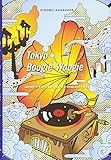Tokyo Boogie-Woogie : Japan's Pop Era and Its Discontents / Hiromu Nagahara.
Material type: TextPublisher: Cambridge, MA : Harvard University Press, [2017]Copyright date: ©2017Description: 1 online resource (288 p.)Content type:
TextPublisher: Cambridge, MA : Harvard University Press, [2017]Copyright date: ©2017Description: 1 online resource (288 p.)Content type: - 9780674971691
- 9780674978409
- 781.630952 23
- ML3501 .N18 2017eb
- online - DeGruyter
- Issued also in print.
| Item type | Current library | Call number | URL | Status | Notes | Barcode | |
|---|---|---|---|---|---|---|---|
 eBook
eBook
|
Biblioteca "Angelicum" Pont. Univ. S.Tommaso d'Aquino Nuvola online | online - DeGruyter (Browse shelf(Opens below)) | Online access | Not for loan (Accesso limitato) | Accesso per gli utenti autorizzati / Access for authorized users | (dgr)9780674978409 |
Frontmatter -- Contents -- Introduction: The Popular Song Era -- 1. The Invention of Popular Song -- 2. The State as Critic and Consumer -- 3. The Long War on Popular Song -- 4. Boogie- Woogie Democracy -- 5. The End of Popular Song and of Critique -- Conclusion: The Television Age and Beyond -- Notes -- Acknowledgments -- Index
restricted access online access with authorization star
http://purl.org/coar/access_right/c_16ec
Emerging in the 1920s, the Japanese pop scene gained a devoted following, and the soundscape of the next four decades became the audible symbol of changing times. In the first English-language history of this Japanese industry, Hiromu Nagahara connects the rise of mass entertainment with Japan's transformation into a postwar middle-class society.
Issued also in print.
Mode of access: Internet via World Wide Web.
In English.
Description based on online resource; title from PDF title page (publisher's Web site, viewed 26. Aug 2020)


